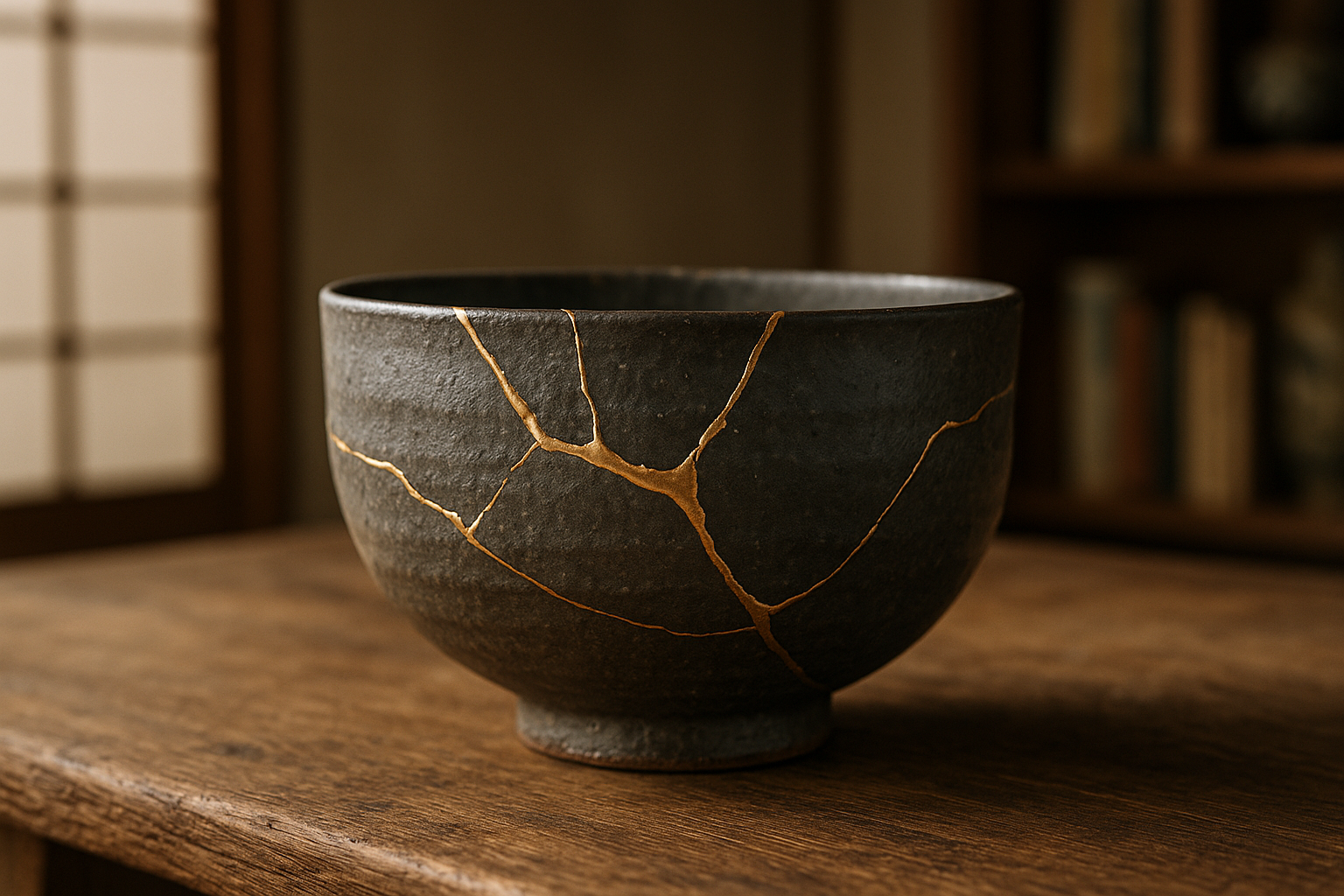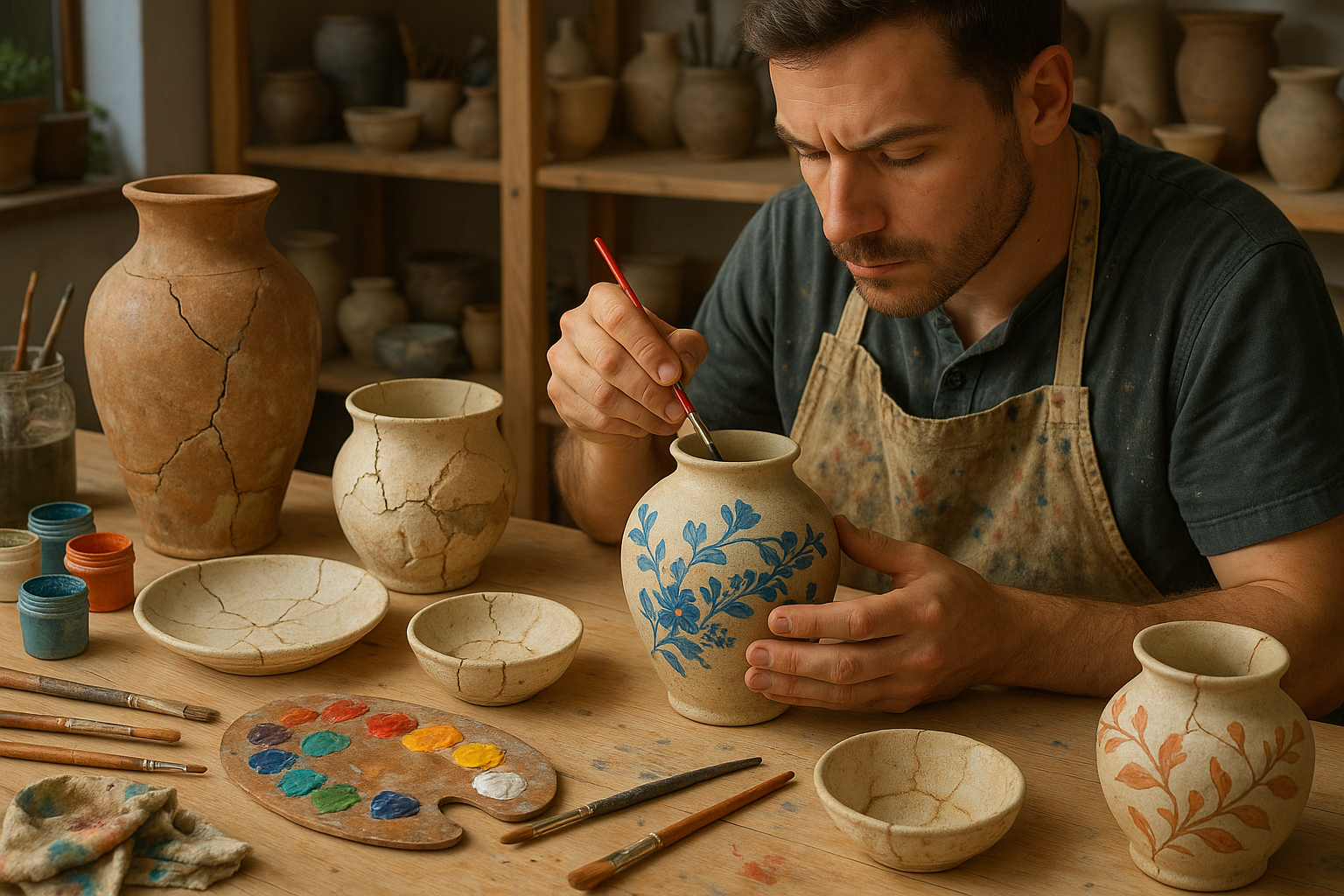In a world that often prizes the flawless and unblemished, there’s a profound beauty in embracing imperfections. Enter the enchanting world of Kintsugi—the Japanese art of repairing broken pottery with lacquer mixed with powdered gold, silver, or platinum. This art form does not merely mend objects; it transforms them, celebrating the fractures as a unique part of the object’s history. 🌟
Kintsugi, which translates to “golden joinery,” is much more than a method of restoration. It is a philosophy that speaks to the resilience of the human spirit. This art form encourages us to see beauty in the imperfect and to appreciate the narratives woven into the cracks and chips of our lives. With roots tracing back to the 15th century, Kintsugi has endured the test of time, offering us timeless elegance and profound lessons in embracing our vulnerabilities.
Imagine a delicate ceramic bowl that has seen better days. Its surface is marred by a web of cracks, each one a testament to a moment of mishap. Rather than discarding the bowl, a Kintsugi artist painstakingly repairs it, highlighting the fractures with radiant veins of gold. The result is a stunning piece, now more beautiful and valuable than it was in its original state. This transformative process invites us to reconsider our relationship with damage and repair, urging us to find value in what we might otherwise overlook.
In this article, we will delve deep into the art and philosophy of Kintsugi, exploring its historical origins and cultural significance. We will examine the meticulous techniques used by skilled artisans to breathe new life into broken objects, revealing the intricate dance between destruction and renewal. Furthermore, we will uncover how Kintsugi extends beyond pottery, offering profound insights into our personal and collective experiences of healing and growth.
As we journey through the history of Kintsugi, we’ll discover how this art form emerged during Japan’s Muromachi period, a time of cultural flourishing. We’ll explore the legend of the shogun Ashikaga Yoshimasa, whose broken tea bowl catalyzed the birth of this golden repair. Through this tale, we’ll see how necessity and creativity birthed an art form that values the narrative of resilience embedded in every crack and seam.
Moving beyond history, we will delve into the artistic techniques that define Kintsugi. From the careful preparation of lacquer to the precise application of gold powder, each step is a testament to the skill and patience of the artisan. This section will reveal how Kintsugi is not just an art form but a meditative practice that requires time, focus, and a deep appreciation for the imperfect.
But Kintsugi is not confined to the realm of ceramics. Its principles have profound implications for how we navigate our own lives. We will explore how the philosophy of Kintsugi offers a compelling lens through which to view personal growth and healing. In a world obsessed with perfection, Kintsugi teaches us to embrace our flaws and to find strength and beauty in our scars. 🌿
In the final part of our exploration, we will examine the modern-day relevance of Kintsugi. We’ll look at how this ancient art form continues to inspire contemporary artists and thinkers across the globe. From fashion to psychology, Kintsugi’s influence is far-reaching, reminding us that beauty lies in the stories of repair and renewal.
Join us as we uncover the timeless elegance of Kintsugi, an art that challenges us to see the world—and ourselves—through a lens of golden beauty. Whether you’re a lover of art, a seeker of deeper meaning, or someone curious about the intersection of tradition and innovation, this exploration of Kintsugi will offer you new perspectives and insights. Let the art of golden repair inspire you to cherish your own journey of transformation and resilience. 💫

Conclusion
The timeless art of Kintsugi, with its profound philosophy and exquisite technique, offers more than just a method of repairing pottery; it presents a way of life that celebrates imperfection and embraces change. Throughout this article, we have journeyed through the history and cultural significance of Kintsugi, tracing its origins in Japan and understanding its impact on art and philosophy. From its inception in the 15th century to its application in modern times, Kintsugi has continued to resonate with people across the world.
Kintsugi’s principle that beauty can be found in the flawed and the broken offers a powerful metaphor for life itself. In a world that often values perfection and uniformity, Kintsugi teaches us to see the beauty in our own scars and experiences. The golden repairs of Kintsugi are not just physical; they represent personal growth, resilience, and the ability to embrace change. By highlighting the repaired cracks with gold, Kintsugi transforms what might be seen as damaged into something even more valuable and unique. ✨
The technique of Kintsugi, involving the careful mending of broken pieces with a lacquer mixed with gold, silver, or platinum, requires patience and skill. It is a labor of love that respects the history and story of the object, preserving its journey and making it a symbol of survival and rebirth. This meticulous process also teaches us patience and mindfulness, encouraging a slower, more thoughtful approach to life.
Moreover, Kintsugi’s application is not limited to ceramics. It has inspired artists, designers, and thinkers globally, encouraging them to apply its principles to various fields, from fashion to mental health. By adopting the Kintsugi mindset, we are inspired to accept our imperfections and appreciate the beauty of transformation. Whether it’s in personal development, relationships, or creative endeavors, the lessons of Kintsugi are timeless and universally relevant.
The popularity of Kintsugi continues to grow, as people find solace and inspiration in its philosophy. As we navigate an increasingly complex and fast-paced world, the art of Kintsugi reminds us of the importance of resilience and the beauty of embracing imperfection. It encourages us to view our challenges and setbacks not as failures, but as opportunities for growth and reinvention.
As we conclude our exploration of Kintsugi, we hope that you feel inspired to incorporate its principles into your own life. Reflect on your own experiences and consider how you can apply the philosophy of Kintsugi to embrace and celebrate your unique journey. 🌀
We invite you to share your thoughts and experiences with us. How has Kintsugi influenced your perspective on beauty and imperfection? Have you tried incorporating its principles into your own life or creative projects? Let us know in the comments below! 🗨️
If you found this article insightful, consider sharing it with friends and family who might also benefit from the wisdom of Kintsugi. Together, let’s celebrate the beauty in brokenness and the art of golden repair. 💛
For more information and resources on Kintsugi, you can explore these links:
- The Art of Kintsugi – Japan Travel
- Kintsugi: Japan’s Art of Broken Objects – The Guardian
- The Japanese Art of Embracing the Imperfect – BBC
Please ensure that the links provided are still active and contain the relevant content before publishing. The inclusion of these resources is intended to offer additional perspectives and deepen your understanding of Kintsugi.




